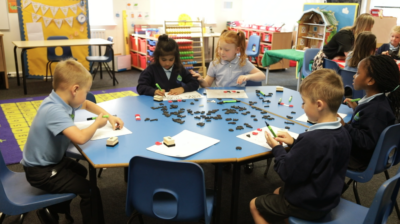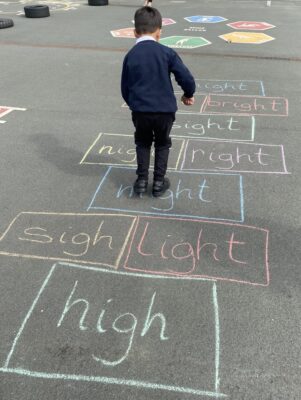A blog for Early Years teachers and senior leaders.
As a phonics company known for taking an enhanced approach, we could have cheered when we read the latest from the EEF on Early Years literacy. It reinforces what we’ve always believed: systematic phonics is essential—but it works best when combined with the right balance of engagement, multisensory learning, and wider language development.
So, what does the research actually say about getting phonics right? Here are the key takeaways every Early Years teacher should know:
1️⃣ Phonics Must Be Systematic and Structured
The evidence is clear—phonics needs to be taught in a clear, progressive sequence. Children need:
- Plenty of decodable reading practice at the right level.
- Regular, structured opportunities to reinforce learning.
- A programme that builds knowledge step by step.
When phonics is inconsistent or rushed, gaps appear.
2️⃣ Multisensory Teaching Helps Learning Stick
EEF highlights that phonics is most effective when children actively engage with sounds. That means:
- Using visual, auditory, and kinaesthetic techniques to reinforce learning.
- Songs, movement, and interactive activities to help retention.
Phonics doesn’t have to be dry—it should be something children experience, not just hear.
3️⃣ Early Reading is More Than Just Phonics
Decoding is only part of the picture. Children also need:
- A rich language environment to develop vocabulary and comprehension.
- Plenty of high-quality talk and storytelling to bring learning to life.
Simply put—phonics teaches children to read but rich conversations and stories teach them to understand.
4️⃣ Teacher Knowledge Makes the Biggest Difference
No programme, no matter how good, works without confident teachers. The EEF highlights the importance of:
- Ongoing phonics CPD for teachers and TAs.
- Consistent, high-quality teaching across the school.
- Assessment that informs teaching, not just tests progress.
The Takeaway? Phonics is Essential—But Not in Isolation
The best phonics teaching balances structure with engagement, decoding with language development, and training with support. It’s about getting the best of both worlds—rigour and fun, structure and creativity.
That’s exactly the balance we aim for at Monster Phonics.
Want to see how we do it? Check out our demo!
Further Reading:
The Education Endowment Foundation have further developed their
Early Years Hub. There you will find information from the Early Years Toolkit, as well as guidance from the Early Years Evidence Store.
Get in touch with me if you want to find out more about Monster Phonics.
Director of Education
Monster Phonics

